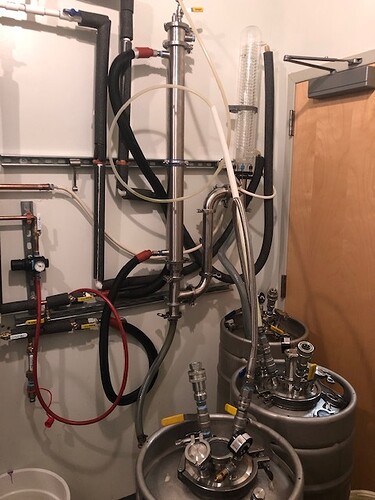In my ongoing war on glassware in my lab, not even my small equipment is safe. Specifically my 5L rotovap, whos’ vapor duct I broke while cleaning it, bricking it. I had one machined out of 316 since the vendor no longer carries the 5L unit and looked at the possibility of an all SS rotovap. The thing that particularly bothers me is actually the rotary flask. Not only do I have a rotating vacuum joint, I end up with the pesky residue that cannot be removed despite heat gunning, as well as being unwieldy (bad for me and clumsy employees).
My 5L rotovap, I have a 2x48" TC shotgun condenser since I broke the glass one. Notice a pattern?
While FFEs get a lot of crap for not purging properly and typically aren’t able to decarb (especially useful if you can do this in you’re rotovap), I’d hazard a guess that if tuned to the task, an FFE could accomplish all of these tasks.
These are some speculative parameters that could make this a viable idea (at least for me). For reference, I use a membrane system to do bulk recovery (~400L), a small FFE to do the secondary bulk recovery (50L) and the rotovap to handle the rest (5L)
Evaporator Length: This obviously controls residence time and a longer evaporator may be necessary if preheating is infeasible. I was thinking a 2x24" could be sufficient for my purposes.
Temperature: I’m planning on going hot, especially for a dual purge/decarb functionality; 150C seems like it’s where I want to be for a good purge and to decarb with a short residence time. I suspect that dehydration and charring is still subject to happen here, so lower temps before that step will be necessary. I plan on having a heater that is 1.5X the kw of my chiller.
On purging, the higher temp will likely be important for removing residuals as well.
Vacuum: Full vac, all the time, obviously.
Feed Viscosity & Solvent Content: Another important one, since we are trying to purge residual, the less solvent the better. The other seemingly important factor is keeping the surface area thin to allow the thin film to do what it does.
Does anyone have reason to think this is a bad thing to attempt or something I’m overlooking? Has anyone attempted this?

